Chapter 24 - Toxic Effects of Solvents
1/43
Earn XP
Description and Tags
Exam 3
Name | Mastery | Learn | Test | Matching | Spaced |
|---|
No study sessions yet.
44 Terms
Trichloroethylene
A widely used solvent that is released into the atmosphere during degreasing operations. It is rapidly absorbed into systemic circulation via oral and inhalation routes. It's toxicity is associated with its metabolites rather than the parent compound itself.
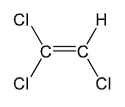
Cytochrome P450s/glutathione transferase
Fill in the blank…
A majority of trichloroethylene undergoes oxidation in the liver by ( ), with a small proportion being conjugated by ( ).
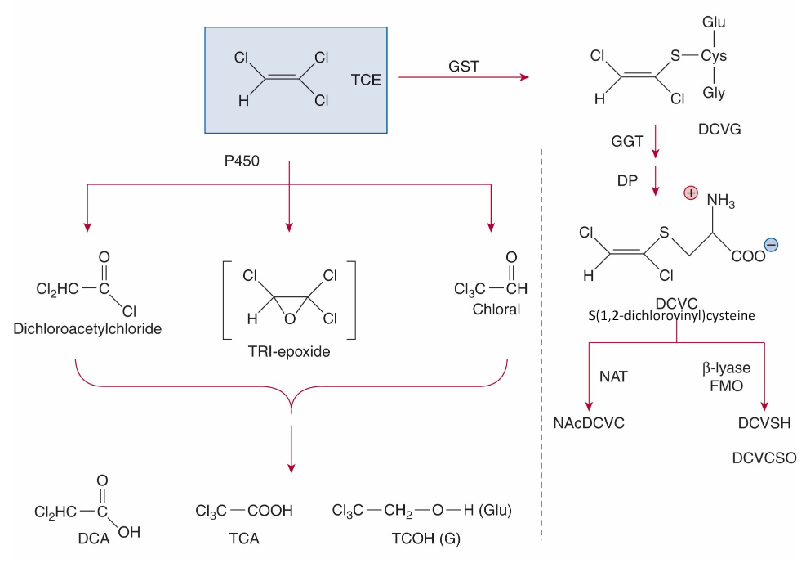
Methylene Chloride
A widespread solvent in industrial processes, food preparation, degreasing agents, and agriculture. It escapes into the environment by evaporation. It has a low boiling point of 40oC and high solubility in water.
Its main route of exposure is inhalation and it can reach a near steady concentration in human blood very quickly. A small proportion is exhaled unchanged.

Cytochrome P450/formyl chloride/glutathione transferase/GSH
Fill in the blank….
Metabolism of methylene chloride can occur in three pathways…
1) ( )-catalyzed oxidation to carbon monoxide via ( ), a reactive intermediate
2) A ( )-mediated pathway
3) Carbon dioxide is formed via the oxidative pathway by a reaction of formyl chloride with a nucleophile like ( ).
Glutathione Transferase Activity
In the metabolism of methylene chloride, this pathway is a low affinity, high capacity pathway that operates at the high exposure levels used in cancer bioassays.
A metabolite of this pathway, GSCH2Cl, causes single-strand breaks in DNA in mouse liver and lung.
Cytochrome P450 Pathway
In the metabolism of methylene chloride, this pathway is a high-affinity, low-capacity pathway that predominates at methylene chloride concentrations present in occupational and environmental settings.
Chloroform
A solvent used primarily in refrigerants. It is classified as a probable human carcinogen and is hepatotoxic and nephrotoxic. This toxicity is likely due to induction of cytochrome P450s.
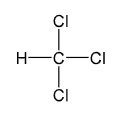
Phosgene/GSH
Fill in the blank…
In the metabolism of chloroform, the target organs liver and kidney metabolize chloroform to ( ), an electrophilic intermediate that is detoxified by covalently binding to cytosolic ( ). When this compound is depleted, phosgene can covalently bind hepatic and renal proteins/lipids.
Carbon Tetrachloride
A once common solvent used in many applications whose use has declined due to its hepatorenal toxicity, carcinogenicity, and atmospheric ozone depletion. It is still ubiquitous in air and groundwater from waste sites. It is a classic hepatotoxin, but kidney injury is the more severe reaction.
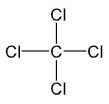
Cytochrome P450/lipid peroxidation/calcium
Fill in the blank…
( )-dependent conversion of carbon tetrachloride to CCl3 and then CCl3COO bioactivates that initiates ( ) by abstracting a hydrogen atom from the polyunsaturated fat of a phospholipid. This increases the permeability of the plasma membrane to ( ), leading to disturbances in homeostasis and necrotic cell death.
1) Trichloroethylene
2) Methylene Chloride
3) Chloroform
4) Carbon Tetrachloride
What are four examples of chlorinated hydrocarbons that pose a risk as toxic solvents?
1) Benzene
2) Toluene
3) Styrene
What are three examples of aromatic hydrocarbons that pose a risk as toxic solvents?
Benzene
A solvent commercially derived from petroleum. It is used in the synthesis of other chemicals and is present in gasoline. Its major route of exposure is inhalation, since it is found in gasoline vapor, auto exhaust, and cigarette smoke.
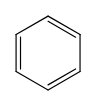
Hepato/bone marrow
Fill in the blank…
The most important effect of benzene is ( ) toxicity, though chronic exposure to benzene can lead to ( ) damage affecting blood cell formation. High levels can also result in an increased risk of leukemia.
Liver/cytochrome P450/glutathione transferases/epoxide hydrolases
Fill in the blank…
Metabolism of benzene occurs primarily in the ( ), though metabolism in bone marrow is believed to play a key role. Metabolism occurs primarily through the action of ( ), ( ), and ( ), producing o- and p-benzoquinones, what are the ( ) toxic metabolites of benzene.
Toluene
An aromatic hydrocarbons solvent that is present in many paints, glues, thinners, and cleaning agents. It is used in the synthesis of other chemicals and is also found in gasoline. It is primarily exposed to humans through inhalation, though dermal contact can initiate toxicity.
This is a common solvent used by solvent abusers.
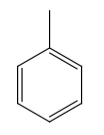
Central nervous system/brain/P450s/ADH/ALDH/glycine
Fill in the blank…
The ( ) is the primary target of toluene. It rapidly accumulates in the ( ) due to the organ’s high rate of blood perfusion and high lipid content. In terms of metabolism, hepatic ( ) convert toluene to benzyl alcohols and cresols. These benzyl alcohols are converted by ( ) and ( ) to benzoic acid, with is conjugated with ( ) and eliminated in the urine as hippuric acid.
Styrene
A solvent primarily used in the manufacture of polystyrene items like rubber, latex, and plastics. Exposure usually occurs through tobacco smoke, auto exhaust, and emissions from building materials and the rubber industry.
Styrene-7,8-oxide/glutathione transferase/epoxide hydrolase
Fill in the blank…
Styrene is metabolized by P450 to ( ), which can bind covalently to proteins and nucleic acid. This metabolite is detoxified by the actions of ( ) and ( ).

1) Ethanol
2) Methanol
3) Ethylene Glycol
4) Diethylene Glycol
What are four examples of solvents containing alcohols, glycols, or glycol ethers?
Ethanol
Humans experience greater exposure to this solvent than any other. It is used as an additive in gasoline, is consumed in alcoholic beverages, and used in a variety of industrial products. It is heavily distributed in body water and adipose tissue and is eliminated through excretion, exhalation, and metabolism.

Acetaldehyde/ADH/CYP2E1/catalase
Fill in the blank…
Ethanol is metabolized to ( ) by three enzymes:
1) The major pathway involves ( )-catalyzed oxidation to acetaldehyde.
2) The second enzyme, ( ), is used in the hepatic microsomal ethanol oxidizing system
3) The third, ( ), utilizes hydrogen peroxide, but due to limited concentrations in hepatocytes, it is not commonly used.
More/ADH
Fill in the blank…
Women are ( ) sensitive to alcohol than men because men have more extensive ( )-catalyzed metabolism of ethanol by gastric mucosa than women.
Methanol
A wood alcohol primarily used as a starting materials in the synthesis of formaldehyde, acetic acid, ethylene glycol, and other compounds. It is a denaturant for ethyl alcohol and is commonly consumed in fruit, fruit juices, vegetables, and alcoholic beverages. Indirect exposure occurs via the hydrolysis of aspartame.
Ingestion/formic acid/formate/cytochrome c oxidase
Fill in the blank…
Serious methanol toxicity is associated with ( ). In severe methanol poisoning, there is a direct correlation between ( ) concentration and increased mortality. In terms of metabolism, the ( ) produced through ADH-metabolism of methanol inhibits ( ), which damages proper functioning of the retina and leads to blindness.
Toxicity can cause acidosis, vision damage, coma, and even death.
1) Sodium bicarbonate via I.V. treats severe acidosis and may help with renal formate excretion
2) Ehtnaol or fomepizole used as competitive inhibitors of ADH
3) Folate or activate folate increases efficiency of formate oxidation
4) Hemodialysis used with severe acidemia
What are some common treatments of methanol poisoning?

Ethylene Glycol
A constituent of antifreeze that is also used to make plastic and polyester fibers. Exposure is often dermal, inhalation, or ingestion. It is quickly absorbed from the GI tract and distributed throughout the body water. It is metabolized by ADH to glycolaldehyde and then glycolic acid. The rate limiting step, the conversion of glycolic acid from ethylene glycol, results in accumulation of glycolic acid in the blood.
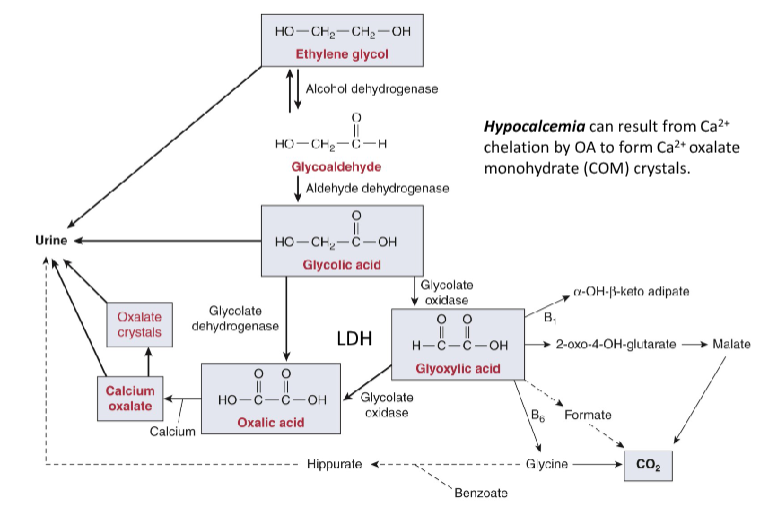
Low/intoxication/cardiopulmonary/renal
Fill in the blank…
Ethylene glycol has a ( ) acute lethal dose in humans. Acute poisoning typically has three stages:
1) A period of ( ), the duration and degree depending on dose.
2) The ( ) stage, causing rapid pulse and breathing.
3) The ( ) toxicity stage, causing metabolic acidosis.
Inhibition/ethanol/fomepizole
Fill in the blank…
Treatment of ethylene glycol poisoning involves:
1) Correction of acidosis
2) ( ) of ethylene glycol metabolism to toxic metabolites
3) Removal of ethylene glycol and its toxic metabolites by hemodialysis
( ) and ( ) given as antidotes to inhibit metabolism.
Diethylene Glycol
A solvent similar to ethylene glycol but with higher boiling point, viscosity, and specific gravity. It has a low lethal dose.

Lipophilic
Fill in the blank…
( ) solvents penetrate the stratum corneum by passive diffusion.
Well/fatty food/first-pass
Fill in the blank…
Solvents are ( )-absorbed from the GI tract. Peak blood levels are observed within a few minutes in fasting subjects, though the presence of ( ) delays absorption. Absorbed chemicals are removed by ( ) elimination as blood passes through the liver.
Alveoli/hydrophilic/lipophilic/exhalation
Fill in the blank…
The majority of systemic absorption of inhaled VOCs occurs in the ( ), where gases equilibrate with blood. In blood, more ( ) solvents dissolve better, while levels of ( ) solvents in the blood increase modestly. Solvents are removed by ( ) by the lungs during their first-pass throughout the pulmonary circulation.
Organic Solvents
Compounds frequently used to dissolve, dilute, or disperse materials that are insoluble in water. Most are refined from petroleum.
Increases/decreases
Fill in the blank…
Lipophilicity of organic solvents ( ) with increasing numbers of carbon or halogen atoms, while volatility ( ).